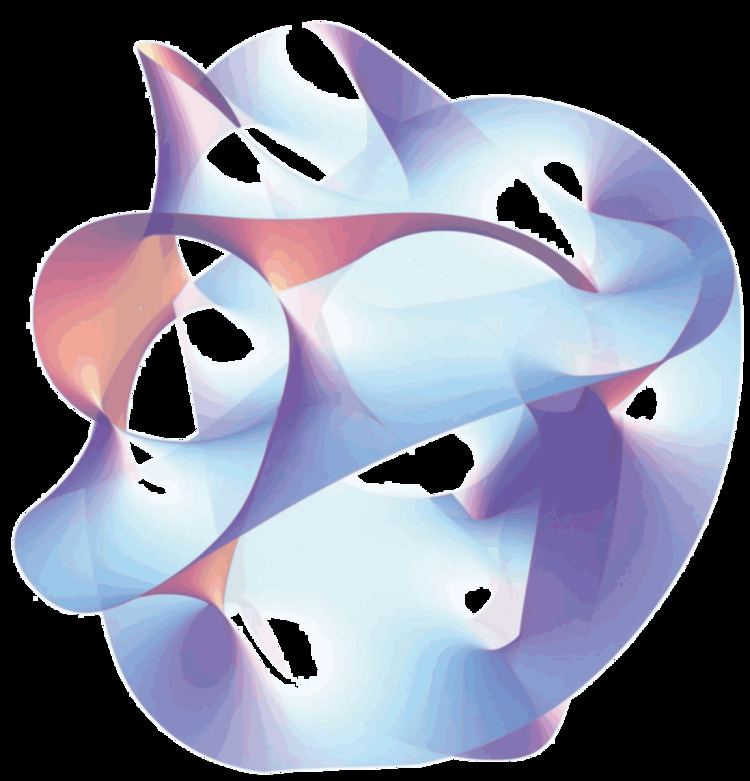 | ||
N = 4 supersymmetric Yang–Mills theory is a mathematical and physical model created to study particles through a simple system, similar to string theory, with conformal symmetry. It is a simplified toy theory based on Yang–Mills theory that does not describe the real world, but is useful because it can act as a proving ground for approaches for attacking problems in more complex theories. It describes a universe containing boson fields and fermion fields which are related by 4 supersymmetries (this means that swapping boson, fermion and scalar fields in a certain way leaves the predictions of the theory invariant). It is one of the simplest (because it has no free parameters except for the gauge group) and one of the few finite quantum field theories in 4 dimensions. It can be thought of as the most symmetric field theory that does not involve gravity.
Contents
Lagrangian
The Lagrangian for the theory is:
where
Ten-dimensional Lagrangian
The above Lagrangian can be found by beginning with the simpler ten-dimensional Lagrangian
where I and J are now run from 0 through 9 and
The components
By compactification on a T6, all the supercharges are preserved, giving N = 4 in the 4-dimensional theory.
A Type IIB string theory interpretation of the theory is the worldvolume theory of a stack of D3-branes.
S-duality
The coupling constants
The theory has symmetries that shift
AdS/CFT correspondence
This theory is important also in the context of the holographic principle. There is a duality between Type IIB string theory on AdS5 × S5 space (a product of 5-dimensional AdS space with a 5-dimensional sphere) and N = 4 Super Yang–Mills on the 4-dimensional boundary of AdS5. It is the most successful realization of the holographic principle, a speculative idea about quantum gravity originally proposed by Gerard 't Hooft and improved and promoted by Leonard Susskind.
Integrability
As the number of colors goes to infinity, the amplitudes scale like
Beisert et al. give a review article demonstrating how in this situation local operators can be expressed via certain states in "spin" chains, but based on a larger Lie superalgebras rather than su(2) for ordinary spin. These are amenable to Bethe ansatz techniques. They also construct an action of the associated Yangian on scattering amplitudes.
Nima Arkani-Hamed et al. have also researched this subject. Using twistor theory, they find a description in terms of the positive Grassmannian. See Amplituhedron.
Relation to 11 dimensional M-Theory
N = 4 Super Yang–Mills can be derived from a simpler 10 dimensional theory, and yet supergravity and M-Theory exist in 11 dimensions. The connection is that if the gauge group U(N) of SYM becomes infinite as
